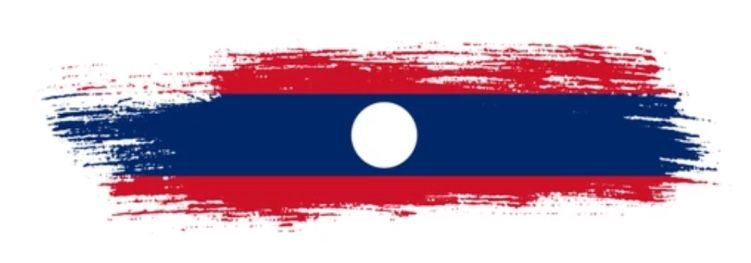NATIONAL LAOS FLAG: MEANING, HISTORY & FACTS
National Flag of Laos prominently features three horizontal stripes. Specifically, the central blue stripe on the Laos flag measures twice the height of the red stripes positioned above and below it. Additionally, a white disc at the centre of the flag has a diameter that equals 4/5 of the height of the blue stripe. Consequently, the Laos flag adheres to a 2:3 ratio, ensuring a balanced and distinct design.
The Laos flag was first adopted in 1945 by the brief Lao Issara government (1945–46). Subsequently, it was used by the Pathet Lao. Furthermore, this transition reflects the evolving political landscape of the country during that period. Notably, it is one of only two flags used by nations governed by Lao communist parties—Cuba being the other—that do not feature communist symbolism.
On December 2, 1975, Laos officially adopted the current national flag, marking its transition to a socialist state. Meanwhile, the previous royal flag of Laos, which was in use before 1975, continues to be used by various members of the Laotian diaspora. Additionally, this enduring use of the flag highlights the ongoing connection to historical and cultural traditions among the diaspora. Furthermore, it underscores the flag’s lasting significance for those who identify with the pre-1975 era of Laotian history.
Overview of National Laos Flag
The current national flag of Laos replaced the previous red flag that featured the triple-headed white Airavata elephant, representing the 19th-century Kingdom of Luang Phrabang.
The Kingdom then continued to use this flag when it became a French protectorate. Moreover, it maintained the flag through its unification with other provinces to form the Kingdom of Laos. Consequently, the flag remained in use until the country gained independence in 1953.
The Lao flag symbolized the ancient name of the country, “Land of a Million Elephants.” From 1953 onward, the royal government fought against the Pathet Lao, whose flag displayed blue with a white disk and red borders at the top and bottom.
Explore popular destinations in Laos – See what travelers like to experience & Book Best Deal Laos Tours & Trips
Flag Of Pathet Laos [Current Flag of Laos]
From 1973 to 1975, the Pathet Lao participated in the government coalition. However, it soon assumed full control, which led to the abdication of the king.
During this transition, the Pathet Lao’s flag was adopted as the national flag. According to Maha Sila Viravong, who designed the current Lao flag, the white disk at the center symbolizes the unity of the Lao people and their hoped-for reunification of the two Laotian regions divided by the Mekong River, Laos and Northeastern Thailand.
Additionally, the white disk is interpreted as representing a full moon over the Mekong River. Meanwhile, the red stripes signify the blood shed by the Lao people on both sides of the Mekong River—including the multi-ethnic Lao population and the Isan people of Northeastern Thailand—in their struggle for freedom and independence from French colonial rule.
In contrast, the blue color represents the Mekong River itself, symbolizing the prosperity of Lao people as in Dok Champa
Meaning of National Flag Of Laos
The design of the current National Flag Of Laos features a rectangular shape with three horizontal stripes. The central blue stripe has a height that is twice that of the top and bottom red stripes. Additionally, with a white circular disk in the center of the flag.
The white circular disc in the center of the Laos flag symbolizes the unity and justice of the nation leading by Lao People’s Revolutionary party aiming for bright future for the nation. This also represents a full moon over the Mekong River.
Two Red Stripes on top and bottom of the flag represents the bloodsheds of the Lao people against French for freedom and independence.
The blue colored stripe dominating the center of the Laos Flag represents flowing and livelihoods of Mekong, a symbol of the nation’s prosperity and peace.
Interesting Facts about Flag of Laos
Two interesting facts about the Laos Flag including communist symbol that is not included anywhere in the flag. Laos together with Cuba are the two communist state with same facts on their national flag.
In addition, Laos is the only communist nation in the world that does not use a five-pointed star as an emblem.
Flag of Laos in 1945
Maha Sila Viravong, a prominent Lao nationalist, intellectual, and scholar of traditional Lao literature, history, and culture, designed the current Laos flag in 1945. As a member of the Lao Issara movement, Viravong received the order of creating a new national flag to distinguish Laos from the royalist red flag featuring the white three-headed elephant, which symbolized the Japanese puppet state of Luang Prabang.
Viravong drew inspiration from Thailand’s 1917 adoption of a red, white, and blue tricolor, which had replaced the traditional royal flag (also red with a white elephant).
Following the establishment of the Lao Issara government and the adoption of the first Lao constitution on October 12, 1945, the government selected Viravong’s design as the national flag of Laos.
Subsequently, this flag remained in use until the reassertion of French control in 1946. The Lao Issara movement continued to use Viravong’s flag in exile until its dissolution in 1949.
When the Pathet Lao, the communist-led successor to the Lao Issara, emerged, they adopted Viravong’s flag to represent their movement. Thus, the flag remained in use until 1975, when the Pathet Lao seized power and officially adopted it as the national flag.
Flag of Kingdom of Lao
From 1952 until the fall of the royal government in 1975, the country displayed a red flag featuring a white three-headed elephant that represented the Hindu god Erawan. Above the elephant, a nine-tiered umbrella was positioned, and the elephant stood on a five-level pedestal.
The white elephant, a significant royal symbol, is commonly found in Southeast Asia, particularly in Myanmar, Thailand, and Laos. Notably, the royal monarchy of Luang Prabang adopted this flag at the beginning of the 20th century under French rule.
Kingdom of Laos Flag inspired by a similar flag from Thailand, which also featured a red field and a single white elephant, this flag reflected regional symbolism and royal traditions.
The nine-tiered umbrella serves as a royal symbol, drawing its origins from Mount Meru in Buddhist cosmology. Furthermore, the pedestal represents the legal foundation upon which the country was established.
Historical flags of Laos from the very beginning
The Lao flag has undergone numerous changes and holds significant meanings. Initially, the government adopted the flag in 1945 as the national flag of Laos. However, on 2nd December 1975, following the overthrow of the King and the takeover of the government by the communist Lao People’s Democratic Republic (Lao PDR), the flag was reintroduced. As a result, this transition marked a significant change in the country’s official symbolism, reflecting the new political landscape. Notably, the current Lao national flag stands out as one of the few communist-style flags that does not feature a star.
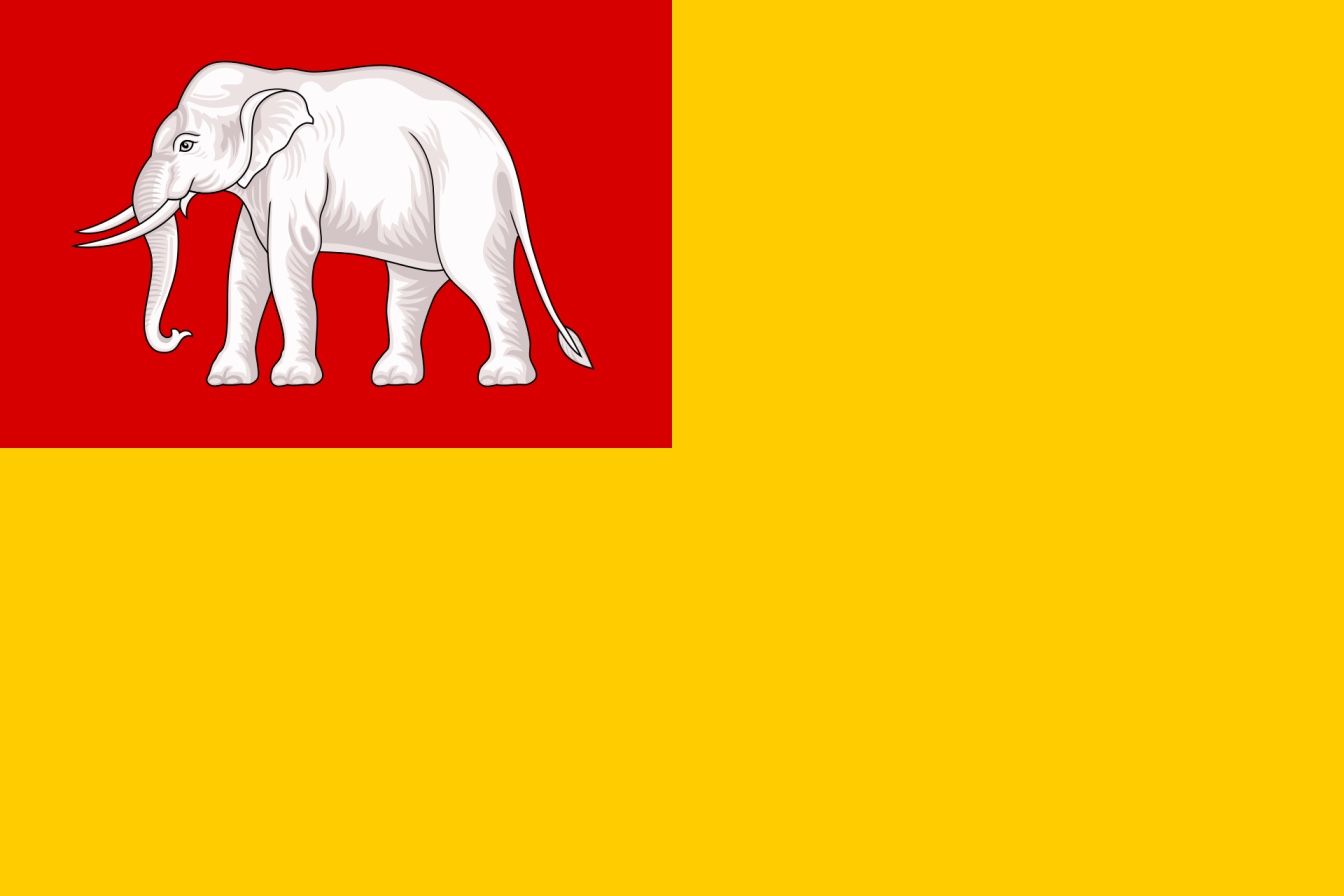
Flag of Kingdom of Vientiane (1707–1828)
.jpg?updatedAt=1722484168860)
Flag of the Kingdom of Luang Phrabang (1707–1893)
.jpg?updatedAt=1722484276308)
Kingdom of Champasak Flag (1713–1904)
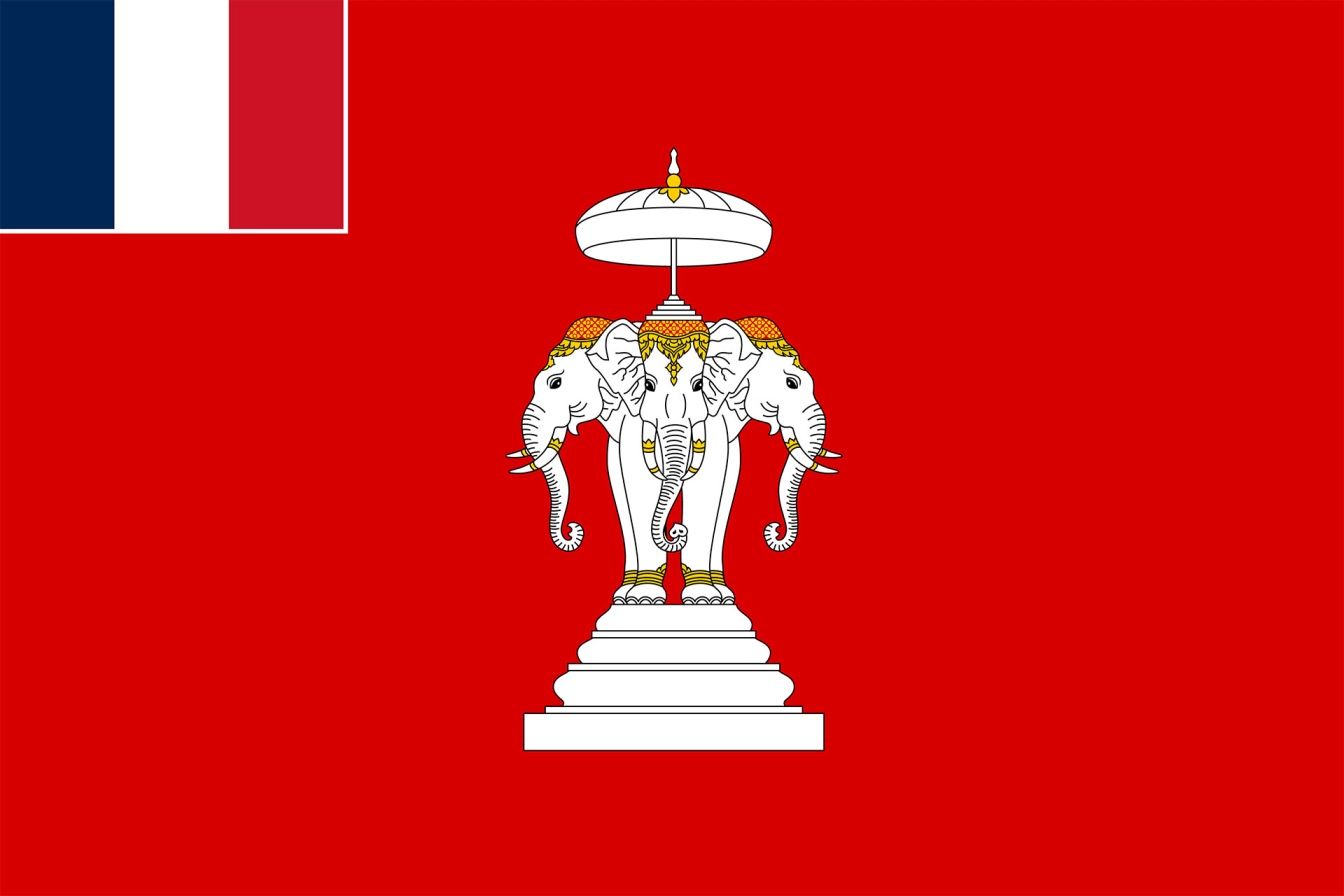
Laos Flag of French protectorate (1893–1947)
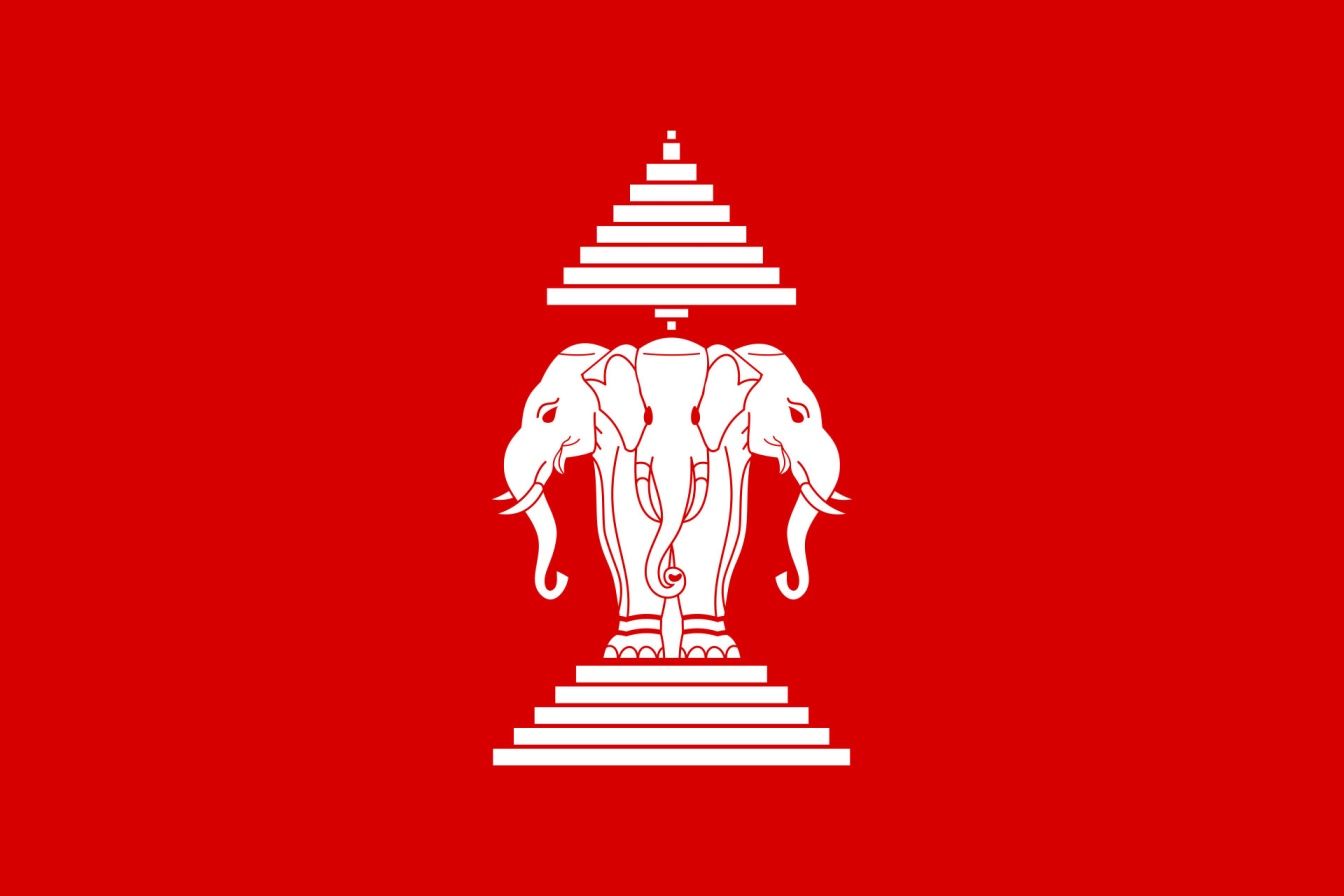
Flag of the Kingdom of Laos (1947–1975)
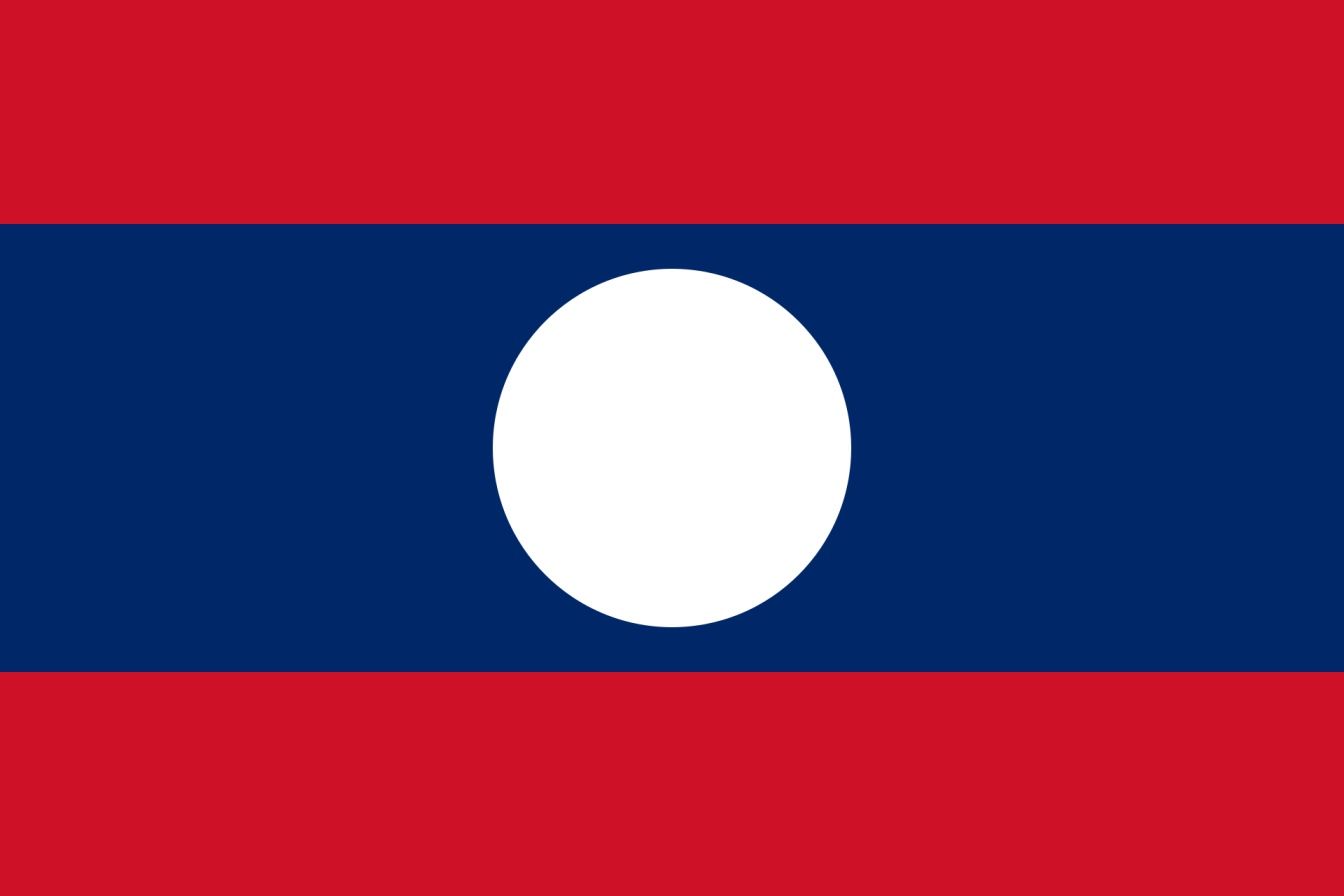
Current Flag Of Laos (1975-present)
Copyright 2013-2017 Vietnamese Private Tours Ltd With Vietnam Luxury Travel






